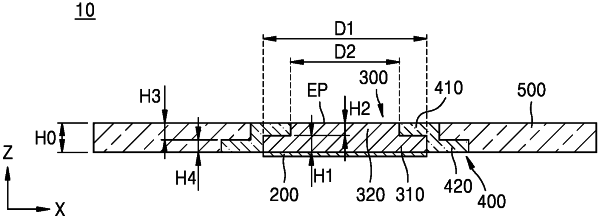| CPC A61B 5/276 (2021.01) [A61B 5/282 (2021.01); A61B 5/4839 (2013.01); A61B 5/6833 (2013.01); A61B 2562/0209 (2013.01); A61B 2562/046 (2013.01); A61B 2562/18 (2013.01)] | 10 Claims |

|
1. A wearable device adapted to attach to a skin of a user, the wearable device comprising:
a plurality of electrodes spaced apart from each other;
conductive members, each positioned on one surface of a respective electrode of the plurality of electrodes and comprises an exposure portion opposite to the respective electrode, wherein each of the conductive members comprises:
a first conductive portion in contact with the one surface of the respective electrode of the plurality of electrodes and having a first outer diameter; and
a second conductive portion positioned concentrically with the first conductive portion and having a second outer diameter less than the first outer diameter;
blocking members, each comprising a different material from the conductive members, and surrounding a respective conductive member so that the exposure portion of the respective conductive member is present therewithin; and
an absorbent member surrounding the blocking members and adapted to contact the skin of the user;
wherein each of first conductive portion of the conductive members overlaps with a respective blocking member of the blocking members in a first direction and a portion of each of the blocking members overlaps with the absorbent member in the first direction; and
wherein none of the conductive members, the blocking members and the absorbent member protrudes further than one another in a direction perpendicular to the one surface of the respective electrode such that the plurality of electrodes, the blocking members, and the absorbent member uniformly come into contact with the skin of the user.
|